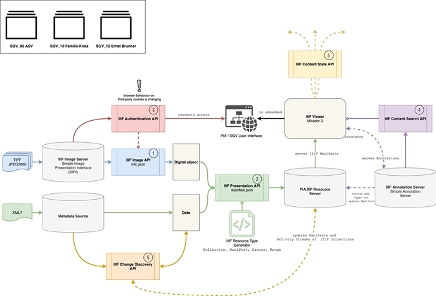Blog
/
IIIF: there is more than meets the eye

One of the reasons for the International Image Interoperability Framework (IIIF)’s inception was to address the challenge of cultural heritage institutions creating technological silos, which were often very costly and inefficient, for the dissemination of their digital surrogates following the mass digitisation of analogue objects, notably medieval manuscripts.
However, one should not stop at the deep zoom, full text search or comparison capabilities that IIIF-compliant viewers such as Universal Viewer or Mirador can offer. If IIIF indeed provides a set of shared application programming interfaces (APIs) for the delivery of digital objects, it can also be understood as a facilitator, streamlining internal workflows and bringing together diverse groups of individuals and institutions.
The potential role that community-driven standards like IIIF can play beyond their basic functions is one of the significant aspects that I will address in my presentation (the International Image Interoperability Framework (IIIF) APIs as the backbone of scientific and participatory research). The talk will be an opportunity to discuss IIIF and to focus on the following two key points:
• Firstly, I will introduce the overarching architecture (cf. draft diagram above) conceived in relation to the IIIF APIs within the "Participatory Knowledge Practices in Analogue and Digital Image Archives" (PIA) project.
• Secondly, I will discuss how the PIA data model will be impacted by the crowdsourcing and user-generated annotations that will be conducted on three photographic collections of the Swiss Society for Folklore Studies (SSFS/SGV).